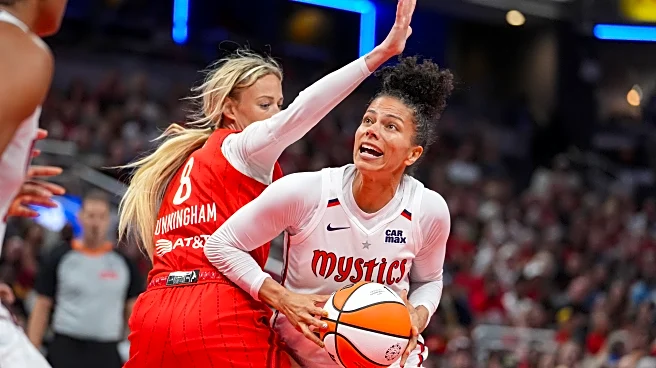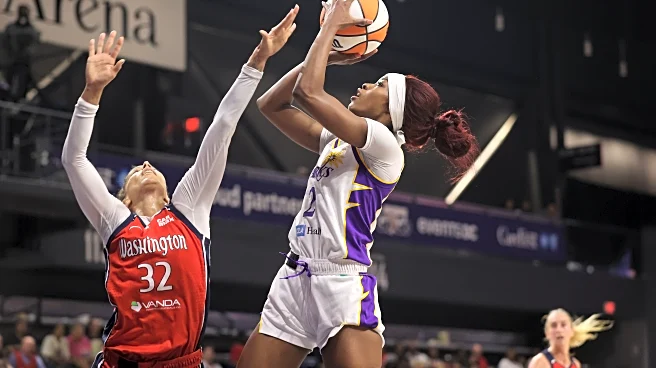Rapid Read • 8 min read
The WNBA has achieved a new regular-season attendance record, reaching 2.43 million attendees, surpassing the previous record of 2,364,736 set in 2002. Caitlin Clark's Indiana Fever have been instrumental in this achievement, drawing over 300,000 fans to their 18 home games despite Clark's limited appearances due to groin injuries. Head coach Stephanie White expressed optimism about Clark's return before the postseason, emphasizing the importance of her long-term health. The Fever's popularity, alongside the Golden State Valkyries' sold-out inaugural season and the New York Liberty's 29 percent attendance increase, has contributed to the overall rise in WNBA attendance.
AD
The record-breaking attendance figures highlight the growing popularity and commercial viability of the WNBA. This surge in fan engagement can lead to increased revenue streams, sponsorship opportunities, and media coverage, further elevating the league's profile. Teams like the Indiana Fever and Golden State Valkyries are setting benchmarks for fan engagement, which could influence other franchises to enhance their marketing and community outreach efforts. The increased visibility of women's sports also contributes to broader societal shifts towards gender equality in athletics.
As the WNBA continues to attract larger audiences, teams may invest more in player development and facilities to maintain this momentum. The league could explore expanding its season or adding new franchises to capitalize on the growing interest. Stakeholders, including sponsors and broadcasters, are likely to increase their involvement, potentially leading to more lucrative deals and partnerships. The focus will also be on ensuring players like Caitlin Clark return to full health to sustain fan interest and competitive performance.
The rise in WNBA attendance reflects broader cultural shifts towards supporting women's sports and recognizing female athletes' contributions. This trend may inspire young athletes and encourage more inclusive sports policies at various levels. The league's success could also prompt discussions on pay equity and investment in women's sports, challenging traditional norms and advocating for systemic change.
AD
More Stories You Might Enjoy












